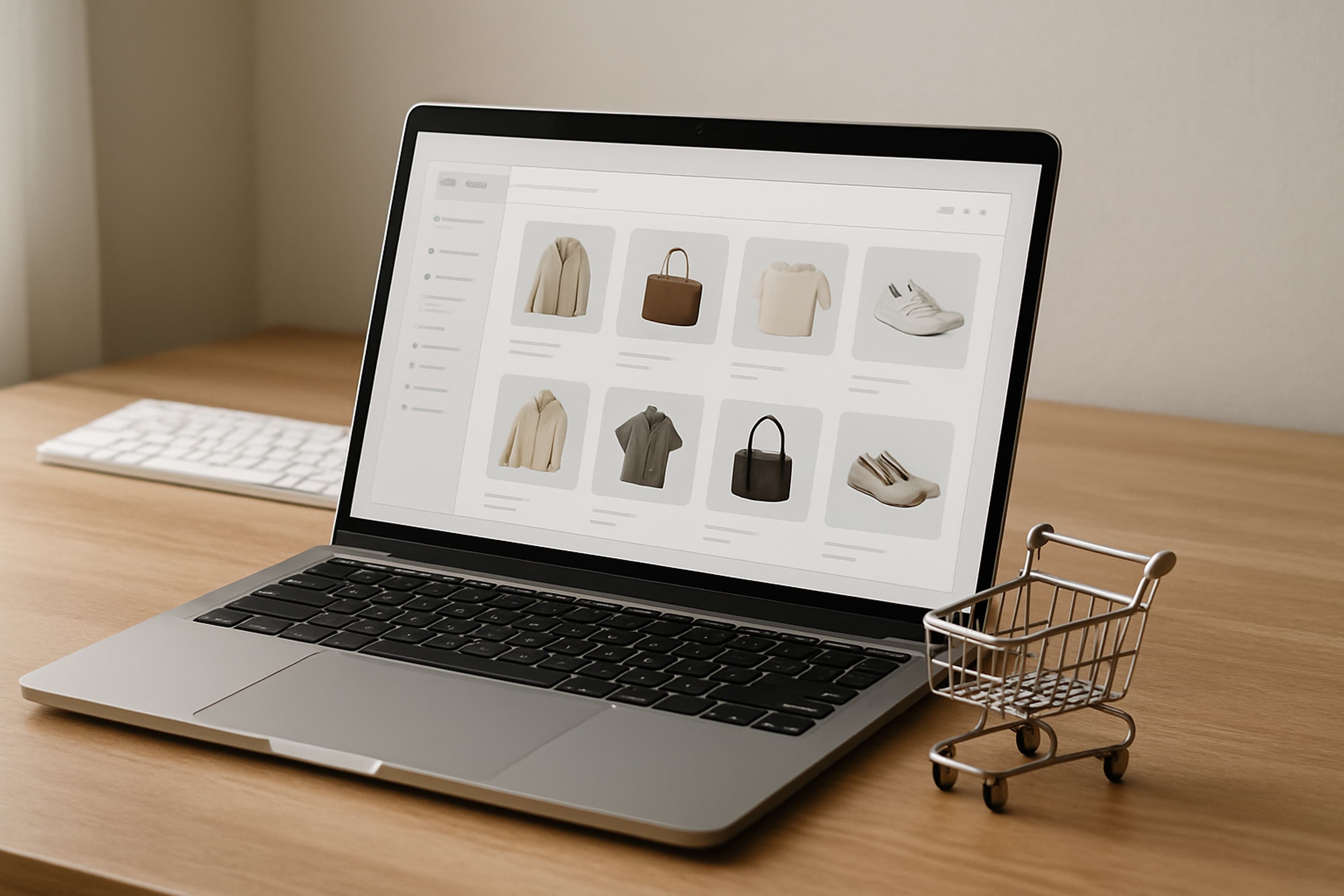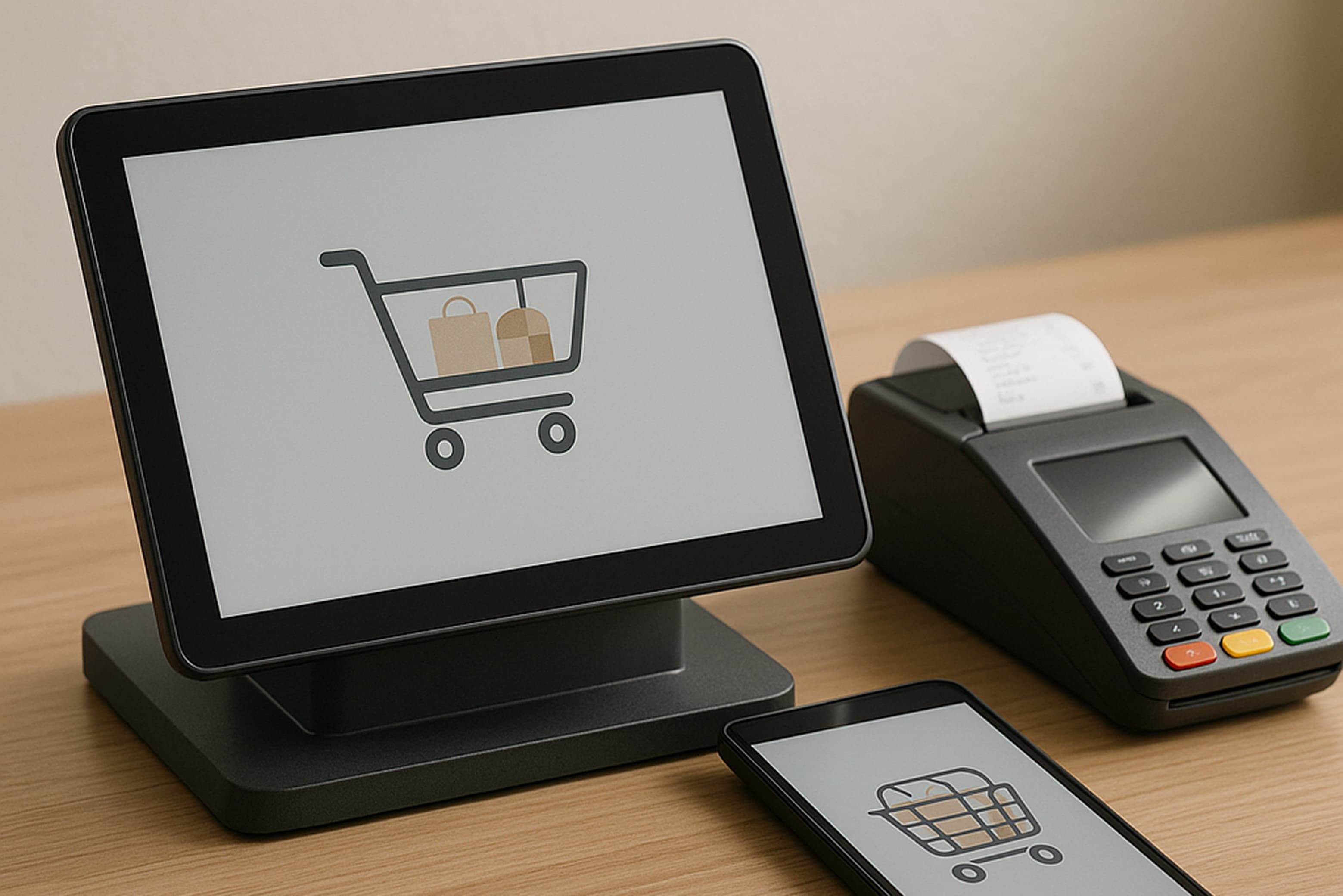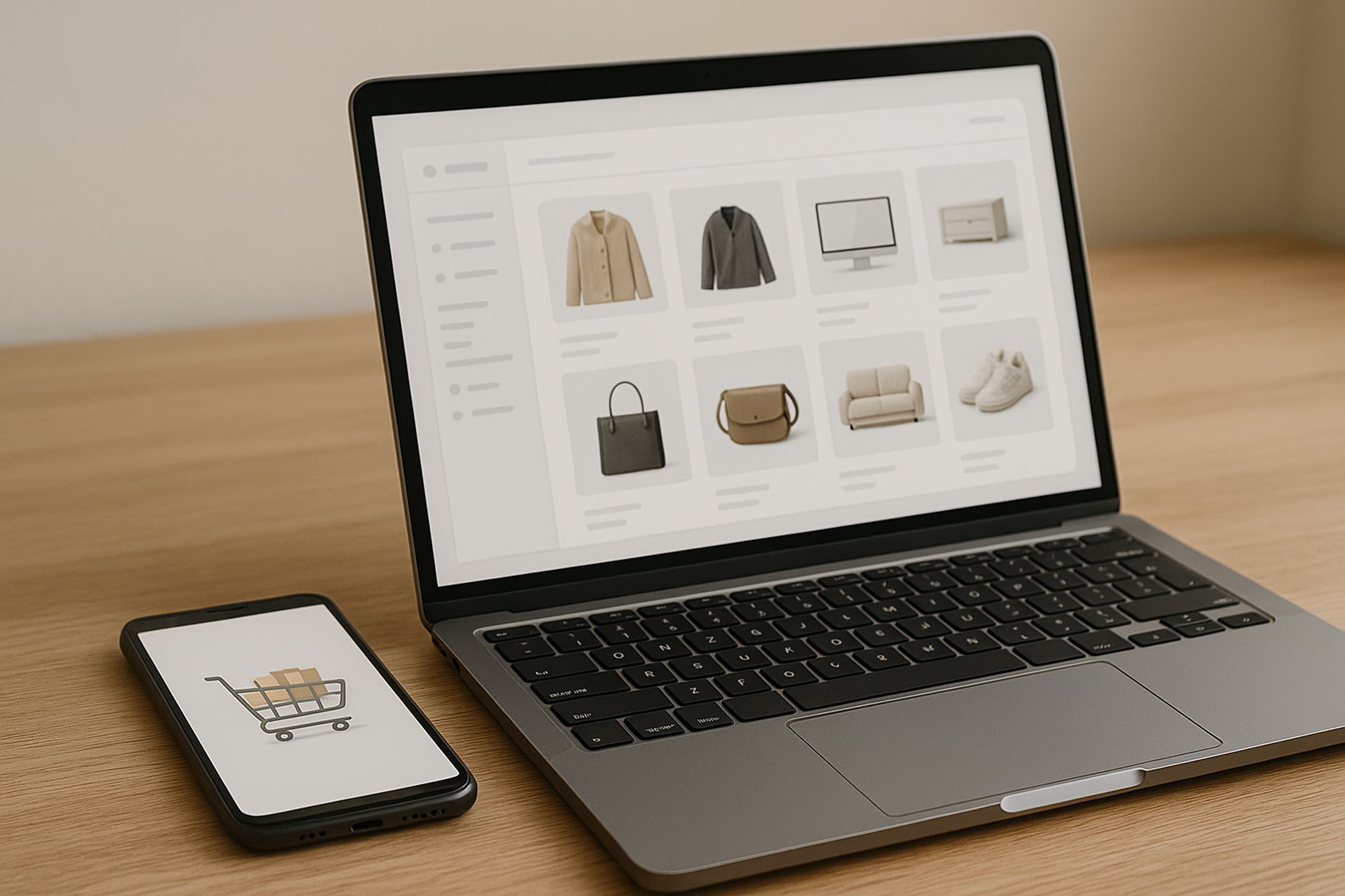
Would you like to know some negative but sobering statistics? Actually, Zendesk says that more than half of customers are willing to switch to a competitor after just one negative experience! Doesn't this insight prompt you to reassess the CX your business provides? Below, as experts in creating brand-new and optimizing existing digital retail solutions, as well as integrating them with offline operations, we'll share our thoughts about how to improve customer service in retail through advanced technologies.
5 Main Technologies That Radically Transform Today’s Retail Customer Service
The modern retail market is rapidly transforming under the influence of technology; moreover, it’s radically changing the service model itself. We'll discuss each of these ways to improve customer service in more detail below.
#1. Voice Commerce
In today's dynamic world, where inclusivity is implemented at all levels, voice interfaces have become a must-have and the foundation of barrier-free sales. At the same time, they must be used wisely: even the most well-implemented voice commerce platform should have a fallback module – that is, if the system doesn't recognize a request, it should always transfer the buyer to a live operator instead of terminating the conversation.
#2. Omnichannel Integration
Truly omnichannel solutions involve more than just automatically displaying the same prices across all points of sale (online and offline); they are comprehensive systems that allow buyers to start a conversation via chat, continue it by phone, and complete it in-store, with the history visible to all responsible employees throughout the entire interaction. In practice, this leads to increased revenue, as consumers always want the same experience, regardless of how and where they deal with your business.
#3. Augmented and/or Virtual Reality
These technologies are no longer about creating a wow effect, but rather about reducing returns during online shopping. Let’s consider AR fitting rooms, for example – when implemented correctly, they can reduce clothing returns up to 40% or even more, while VR catalogs can help premium retailers present their products (for example, furniture or plumbing fixtures) in real premises.
#4. Internet of Things
IoT is a technology in retail stores that makes their customer service proactive. For example, network-connected cash registers or refrigeration units can automatically generate tickets when malfunctions are detected. Similarly, sensors can collect customer data at physical points of sale, making the CX seamless, personalized, and comfortable. This is why large retailers often deploy systems where data from dozens of sensors is fed into a single dashboard and automatically transmitted to responsible employees in real time.
#5. Machine Learning and/or Artificial Intelligence
These two technologies are currently widely used in both personalizing the consumer experience (tailored product selections, loyalty systems, personalized retail platform interfaces, etc.) and automating customer service, primarily through chatbots. Furthermore, by deeply analyzing the behavior of each buyer, such solutions can anticipate their needs, forecast demand, and identify trends long before competitors catch up.
What This Means for Retailers
While retail businesses previously had to wait for complaints or questions to assess their customer service, they can now anticipate needs and prevent mistakes before they damage their reputation.

Omnichannel Retailing
Our experience in technology retail demonstrates that buyers who face gaps between online and offline channels return less frequently – that's why omnichannel solutions make sense. For example, you can implement a seamless shopping cart so people can select items in the app and pay for them in-store (with personalized discounts applied automatically).
CX Impact
Customer service today is more than just a call center; it's the link between the storefront, warehouse, logistics, and your CRM system. This means that when the entire service team has access to a single customer history, all problems and questions are resolved more quickly, and buyers begin to perceive the business as a trusted shopping partner.
Online and Offline Channels’ Integration
When integrating online and offline channels, it's important to combine separate systems and build end-to-end scenarios, from QR codes that work in offline stores to push notifications about orders. As a specific example, we recommend considering a module that automatically offers consumers the option to pick up their online orders at a store near their geolocation – this will significantly reduce the number of abandoned items.
CRM Systems
Although CRM systems are being implemented by retailers everywhere, they are often used simply as a contact database. In reality, they can be much more useful, recording all interactions to introduce personalization, analytics, and recommendations.
Benefits
A properly implemented CRM provides businesses with transparency, as all relevant data is collected in one place. It also boosts speed (because your operators will be able to view purchase history and immediately provide relevant offers) and predictability (because the system will automatically notify your operators if a customer hasn't returned for a purchase in a while, requiring special attention).
Personalization
Personalization is also responsible for retention; however, it's important not only to address each buyer by name, but also to automate and set up the creation of personalized offers through the aforementioned technological solutions, such as AI, IoT, omnichannel retailing, and others.
Segmentation and Targeting
Classic segmentation is often too imprecise, so to improve its capabilities, it’s better to use ML models on top of CRM, which divide the audience according to behavioral patterns, that is, those who respond more actively to discounts, those who respond to premium service, those who respond to express delivery, etc.
Customised Marketing Campaigns
CRM enables businesses to launch marketing campaigns based on the historical patterns of each individual buyer. For example, if properly configured, such a system can automatically detect a trigger like "30 days have passed since the last order, which means we should offer a discount on a product group that was previously purchased most frequently."
Loyalty Programs
Loyalty only works when implemented thoughtfully – which is why successful businesses often implement dynamic point systems, rewarding their clients with additional bonuses for purchases during store downtime when buyer activity is lower.
Role in Proactive Customer Support
Proactive support involves resolving issues before they are raised. CRM can also help here, as it can notify buyers if a delivery is delayed and, for example, automatically send an apology with a promo code.
Personalization and Recommendation Engines
Personalization and recommendation engines analyze user behavior in real time, offering them the most relevant products or services – ultimately, increasing the average order value and repeat purchase frequency.
The Role of Recommendation Engines
Beyond simply promoting products, recommendation systems help customers make informed decisions. For example, advanced solutions can simultaneously analyze hundreds of behavioral parameters, from search history to the time when people most often purchase, and, thus, positively impact conversion rates.
Enhancing Customer Engagement
Personalization also actively improves brand engagement, because when users see that the system understands their needs, they tend to return more often, which cannot be underestimated in terms of the cost of attracting new buyers and retaining existing ones.
Tailored Product Suggestions
Personalized suggestions are most effective when integrated into every communication channel, including websites, mobile apps, email newsletters, and even physical checkouts in brick-and-mortar stores. Moreover, many brands configure their CRM systems so that offline salespeople receive suggestions based on customer history in real time, thereby increasing cross-selling.
Curated Content
Instead of generic email newsletters, you can offer your clients personalized life hacks (on clothing care, cooking, makeup, using technology, basically, everything your business specializes in) – this has a positive impact on CTR compared to a standard approach.
Dynamic Pricing
This involves instantly adjusting prices to the behavior of TA segments. For example, students can receive discounts during certain hours, while the premium TA can obtain pre-order offers. Since this requires fine-tuning, machine learning models are often implemented here.
Successful Examples
Personalization is a key focus for major retailers today, with Amazon, Sephora, Walmart, Starbucks, and The North Face all actively using artificial intelligence and machine learning to analyze customer data and deliver personalized experiences.
Self-Service Technologies
Self-service technologies reduce the workload on your personnel while giving buyers a sense of control over their actions. At the same time, it's important to make such solutions intuitive and helpful.
The Rise of Self-Service Technologies
The rise of self-service is driven by people's less willingness to wait in line or waste time calling an operator. This particularly applies to Generation Z and millennials, who are more likely to choose chatbots.

The Self-Service Technologies Benefits
The benefits of self-service are clear: these technologies reduce human support costs, resolve simple issues faster, minimize service time, and, of course, relieve your personnel of routine tasks.
Successful Implementation Examples
Some of the most prominent examples of implementing self-service technologies include Amazon Go stores (which have no cashiers) and numerous grocery stores in Asian countries (particularly in Japan, where this is a common practice).
Chatbots and Virtual Assistants
Chatbots and virtual assistants, of course, are not always capable of replacing live call center employees, but, in a number of tasks, automation with them significantly reduces the workload and speeds up service.
The Role of Chatbots and Virtual Assistants
Virtual assistants provide customers with instant feedback, but that's not their only purpose; many retailers also integrate them with CRMs and recommendation engines to transform them into fully-fledged personal consultants.
Handling Common Customer Enquiries
Chatbots instantly handle standard scenarios like "Where is my order?" or "How do I process a return?" without the need for live support operators, meaning you can scale your customer base without expanding your staff.
The Chatbot Benefits
Smart chatbots are available 24/7, 365 days a year, and can resolve common issues faster than human operators (which, in practice, accounts for approximately 80% of all inquiries, depending on the type of product you sell). When integrated with a CRM, they also provide unprecedented personalization.
Successful Implementation Examples
The most well-implemented examples include the H&M and Zara chatbots, which autonomously process user requests and provide personalized recommendations at the level of highly qualified consultants.
Contactless Payment and Checkout Solutions
Contactless payments and simplified checkout solutions offer speed and convenience for shoppers, while for businesses, they reduce operating costs and allow them to collect more data on customer behavior.
Mobile Wallets
Apple Pay and Google Pay are widely used, but you can gain an edge over your competitors by implementing custom wallets within your branded apps. This way, your clients will have a unified storage for not only their bank card details, but also rewards, cashback, gift certificates, and more.
The Contactless Payment Methods’ Benefits
The benefits of contactless payments extend beyond increased transaction speed; they are also more secure (as bank cards and cash are not exchanged between people), more hygienic, and can be seamlessly integrated with loyalty systems.
Streamlining Checkout Processes
If the checkout process takes less than a minute, the likelihood of cart abandonment will be significantly reduced. This can be achieved by scanning products in-app, adding them to the cart there, paying online, and then simply confirming the purchase when demonstrating the appropriate screen at the moment of exiting the physical store.
Creating a Seamless and Hygienic Shopping Experience
Online and offline channels should work as a unified system – for example, by allowing people to pay for their orders via an app and pick them up in-store, bypassing the cash register. Furthermore, contactless experiences create a sense of safety, which is important to many shoppers even now, years after the pandemic.
Conclusion
If you're interested in following any of the above ways to improve customer service in your retail business, book a call with us, and we'll do it cost-effectively, quickly, and with maximum ROI for your company.
.png)








